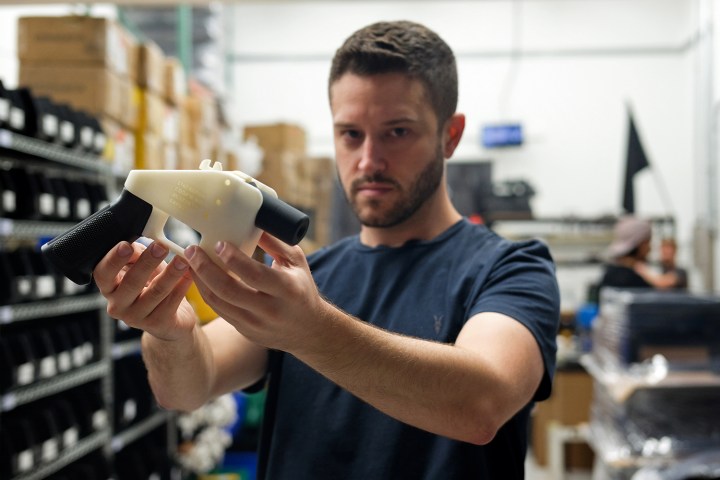
Cody Wilson, founder of Defense Distributed and longtime proponent of 3D-printed guns and gun rights, has arrived in the U.S. and is currently being held in Houston, Texas. Wilson was met at the airport by agents of the U.S. Marshals office, who have since handed him over to local authorities. He is currently being held on $150,000 bail.
Taiwanese authorities arrested Wilson on Friday for illegally entering the country after the U.S. revoked his passport. He was then extradited to the U.S., where he faces charges of sexual assault involving a minor. Court records allege that Wilson had paid a 17-year-old girl in exchange for sexual favors. The assault reportedly occurred on August 15 and the warrant for Wilson’s arrest was issued about a week later. In a statement supplied to Digital Trends, Wilson’s attorney acknowledged his return to the U.S. — and little else.
“We are glad that Cody is back in Texas again where we can work with him on his case.”
Local media reports that Wilson’s whereabouts were divulged by staff at a Taipei City hotel. After about three hours, Wilson left the hotel and was met by local law enforcement. Reports indicate that Wilson had no illegal substances on him and that he cooperated during his arrest. Wilson had apparently intended to hide out in Taiwan; he even attempted to rent an apartment under a false name while pretending to be a student. But after making his downpayment, the rental agency recognized Wilson and reported him to the law enforcement.
Taiwan does not have a standard extradition agreement with the United States, but a representative of the U.S. Marshall’s Office told Ars Technica that they were working with their “international partners on this matter.”
Prior to his arrest, Wilson was best known as the founder of Defense Distributed. The platform, which the law student defended as an exercise of the second amendment, created a blueprint for 3D printers to create functional plastic guns. Even before his arrest, Wilson was no stranger to controversy, as many were concerned about the potential dangers of his Wiki Weapon project.
It was argued that such a project would make it too easy for people to bypass regulations surrounding firearms, allowing former felons, those under age, or people diagnosed with dangerous mental disorders to easily get their hands on firearms. Despite being banned from Indiegogo, the Wiki Weapon project was successfully funded. However, the funding issues were just the beginning of Wilson’s troubles with the project. Eventually, the company behind the 3D printers used in the project reclaimed their hardware, stating that they did not want to be involved in a potential violation of federal law.
Updated on 9/24/18: Added statement from Wilson’s lawyer.


